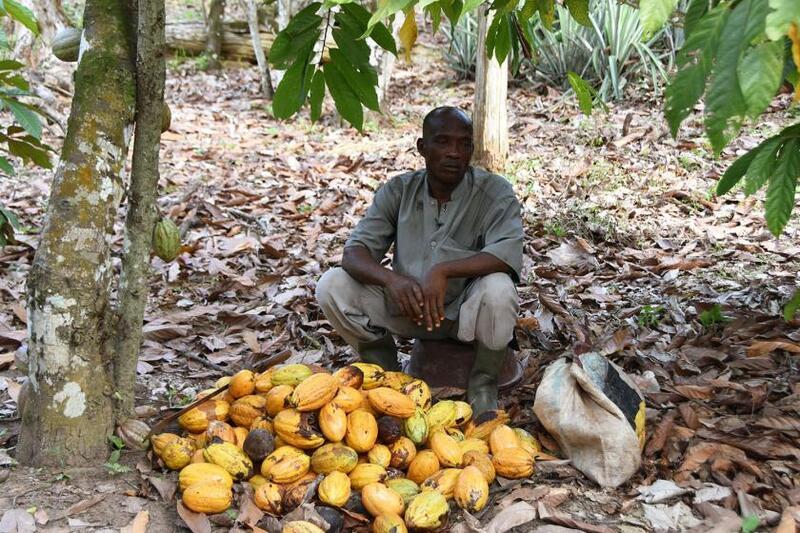
$ 5 m “PropteX” Program aims to support startups, innovation
Paragon Developments has teamed up with Adeer International, PMaestro alongside their German partner, QNTF, to ...

Agroforestry proved to be the best way to restore 20 percent of Côte d’Ivoire’s forests. This will also help confronting climate change challenges.
Côte d’Ivoire has the fastest rate of deforestation in Africa—and one of the fastest in the world. According to the Food and Agriculture Organization of the United Nations, the Ivorian forest cover is down to 8 percent.
The consequences have been dramatic; a major drop in rainfall and other devastating alterations in local climatic conditions that threaten the culture of cocoa, Côte d’Ivoire’s main agricultural commodity.
Cocoa has brought prosperity to the country. However, decades of production have exhausted the soil. The decreasing fertility of unsustainably-operated plantations has led local farmers to encroach on forests in search of more productive land. As a result, the cocoa sector, a casualty of the climate crisis, is also the main driver of deforestation in Côte d’Ivoire.
The issue is so serious that Côte d’Ivoire signed the UN New York Declaration on Forests in 2014 and committed to restoring the national forest to 20 per cent of the territory by 2030. Within this context, one of the most promising solutions is planting associated trees in cocoa plantations.
“Agroforestry, though not the only solution to deforestation, is potentially one the most effective,” says Jonathan Gheyssens, REDD+ and Sustainable Land Use Program Officer at the UN Environment Finance Initiative. “It means the diversification of revenue streams and reducing monoculture risks for smallholder farmers who face fluctuating cocoa export prices. It also increases their resilience to climate variations and makes a positive contribution to climate change mitigation.”
The UN-REDD Program, a joint global initiative of the Food and Agriculture Organization of the United Nations, the United Nations Development Program and the UN Environment Program, works with cooperatives such as the one in Agboville where both Kadjatou and Saidou are members.
The cooperative helps the farmers switch to agroforestry through training. “The shadow of the trees protects the roots of the cocoa plant,” says trainer Amory Parfait, explaining the importance of planting other trees besides cocoa. “We started this diversification two years ago, and we now plant avocado, orange and mango trees amongst the cocoa.”
In addition to promoting agroforestry, the UN-REDD Program also advocates for increased agricultural productivity with improved plant material while making use of good practices.
“A lot of forests were destroyed to make way for plantations,” says Jean Paul Aka, national sustainable land use finance specialist and REDD+ expert. “Half of it went to cocoa production, the rest to palm oil and rubber.”
Old cocoa seeds used to require a lot of land because the yield was low. New cocoa varieties can yield up to four times as much product, but only with the right knowledge. They do not resist the harsh sun, for example, but they do produce very fast—after 18 months instead of four years—and three times more than the older generation of cocoa trees.
“For the new seed to work, a lot of shadow, fertilizer and protection against diseases is needed and the farmers need advice on good agricultural practices,” says Aka. “If you use the new seeds, you have better production and you can harvest all year long, provided there’s enough rain.”
Youssouf Ndjore, acting country director for the Côte d’Ivoire office of the World Cocoa Foundation, agrees with the need for a sustainable cocoa business through agroforestry: “Côte d’Ivoire and Ghana signed the Cocoa and Forests Initiative, a commitment to produce more cocoa on less land. The way to do that is through agroforestry, to produce green cocoa, cocoa that can be traced to ensure it isn’t coming from prohibited or protected areas, that it’s not harmful to the forest and that it gives sustainable revenue to farmers. The vision of the World Cocoa Organization for the future is to have more cocoa with thriving farmers on less land so that we can have a better environment for the future generations.”
Paragon Developments has teamed up with Adeer International, PMaestro alongside their German partner, QNTF, to ...
Crédit Agricole Egypt Foundation for Development and Schneider Electric have successfully concluded the Second Phase ...
The European Commission (EC) has decided to register a European Citizens’ Initiative (ECI) entitled ‘Save ...


اترك تعليقا